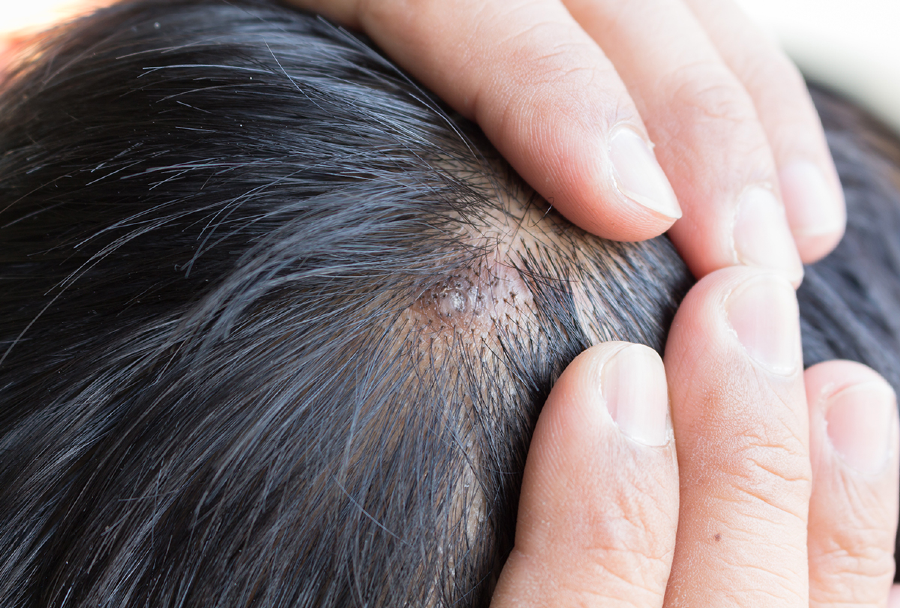The majority of scabs and open sores on the scalp are safe and will heal on their own over time. Occasionally, though, they may be an indication of a disease that requires treatment, such as contact dermatitis, psoriasis, or head lice. In these situations, it is essential to see a doctor. In this article, we will investigate the numerous causes of scalp sores and scabs on the scalp, as well as the potential treatments for these conditions. In addition, we discuss preventative measures and when medical attention is necessary.
Psoriasis
Psoriasis is a disorder in which the body’s skin cells are replaced at a faster rate than usual. This results in skin regions that are flaky, dry, and discoloured. These patches may manifest almost everywhere on the body, including the scalp. Scalp psoriasis, which affects the skin of the scalp, is often characterised by itchy, flaky skin that resembles dandruff.
Patients with psoriasis who recognise that some drugs induce or exacerbate their symptoms may have a trigger. Discovering what causes your migraines and learning how to prevent it, whether its stress or a certain diet, might be beneficial. Cigarette smoking, for example, typically aggravates psoriasis and makes it more difficult to heal the illness completely.
Dermatitis induced by touch
Contact dermatitis is a kind of eczema that causes the skin to become dry, scaly, and blistering. This reaction is triggered when a chemical that irritates the skin comes into close contact with a person’s skin. When contact dermatitis occurs on the scalp, a shampoo, other hair product, or bar of soap is often the irritant.
Once the irritant that caused the contact dermatitis has been identified and avoided, the condition often resolves on its own. If the rash causes significant discomfort or itching, a physician may prescribe a medicated shampoo or corticosteroid to alleviate the symptoms.
Contact dermatitis, unlike psoriasis, is caused by direct contact with irritants. In addition, unlike psoriasis, this ailment does not result in the formation of thick skin plaques.
Seborrheic dermatitis
Seborrheic dermatitis is a common disorder that causes the skin to become itchy, dry, and scaly, and may also lead to the development of skin lesions. This rash appears in areas with a high concentration of sebaceous glands. Sebum is the term used to describe the oily material produced by sebaceous glands.
Seborrheic dermatitis may give the skin an oily or scaly appearance. In severe cases, it may cause the skin around the hairline to become scaly and raised. Adults with seborrheic dermatitis may experience symptoms more often when nervous, sleep-deprived, or exposed to other irritants.
Uncomplicated damage
A very minor mishap might result in a cut or scratch on the scalp. Scratching excessively may result in skin fissures and ulcers, which may subsequently grow into scabs. Minor injuries, such as cuts and scrapes, may often be treated at home. However, if the wound is significant and severe, medical intervention may be required.
Impetigo
A bacterial infection of impetigo may cause blisters and open sores. It is not uncommon for sores to appear on the cheeks and lips, and they may be itchy. Conversely, they may sometimes appear on the scalp or hairline. Impetigo may occur when Staphylococcus or Streptococcus bacteria have penetrated a cut or wound. The virus is highly infectious and prevalent among preschool-aged and younger children.





